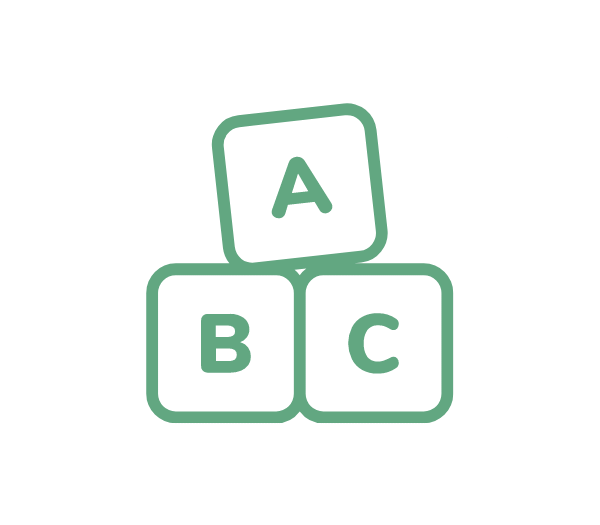
Toy and play information
Children aged
3 to 6 months
At this age your baby is starting to reach, grasp and interact.

Play ideas
Mirror
How does it help the baby?
Helping my baby learn through looking
Tips:
- Visual attention and recognition
- Exploration
- Learning to focus and follow images
Scroll down to read more.
Whoozit, sensory balls and blocks
How does it help the baby?
Helping my baby learn through exploring
Tips:
- Reaching, grasping, holding and releasing
- Passing objects between hands
- Feeling different textures
- Bringing objects to the mouth
Scroll down to read more.
Soft textured books with simple pictures
How does it help the baby?
Helping my baby learn through using senses
Tips:
- Looking at pictures
- Learning to use both hands
- Feeling different textures
- Listening to different words you say
Scroll down to read more.
Bubbles
How does it help the baby?
Boosting my baby’s brain and eyes
Tips:
- Looking at, following and reaching for bubbles
- Listening to simple words you say while playing, such as bubble or pop
Scroll down to read more.
Activity spiral
How does it help the baby?
Helping my baby learn through moving
Tips:
- Reaching and grasping
- Bringing legs up to kick toys
- Getting ready to roll over
Scroll down to read more.
Avoid screen time
How does it help the baby?
Protecting my baby’s learning
Tips:
- Some studies show that children who watch TV or have screen time can have poorer concentration and poorer language development
- Try to keep the TV off when your baby is in the room as babies of this age can become distracted by the screen
Scroll down to read more.
Did you know?
Babies learn in the context of a relationship so talking, playing and affectionate touching will develop your baby’s cognitive, language and motor skills. Talking to your baby develops their language skills.
Tips and ideas
Play together in a variety of positions
Tummy time – Place brightly coloured toys, books or a mirror in front of your baby.
Learning to sit – Sit on the floor with your baby between your legs for support. Put interesting toys in front of your baby or turn your baby around to face you.
Exploring with hands and mouth – Place toys next to your baby to encourage picking up or in his/her hands for exploring
Things to remember
Using a variety of facial expressions – It grabs your baby’s attention and promotes interaction.
Rhymes and songs – Use hand motions to increase attention, such as Pat-A-Cake, Itsy Bitsy Spider and Twinkle Twinkle Little Star.
Social and emotional growth – Engaging in relationships by laughing aloud, recognising faces, mimicking facial expressions, and enjoying play with other people.
Keep your baby safe
No sleeping on tummy – Sleeping on tummy has been associated with an increased risk of sudden infant death syndrome. Tummy time only when awake.
Only use safe toys to avoid choking – Children of this age love putting toys in their mouth. Ensure all toys are suitable and safe for young children.
Avoid using moulded seats – The rigidity of the seat may interfere with the natural process of acquiring postural control which is necessary for sitting and crawling.
Did you know?
Babies of 6 months are already beginning to respond to their name. Learning to sit and play is an important building block for later crawling, standing and walking.
The advice on this page has been created by B. Hutchon and S. Powell, Royal Free London, together with Dr. A. Fernandez, Neonatologist San Jose Hospital, Chile.

